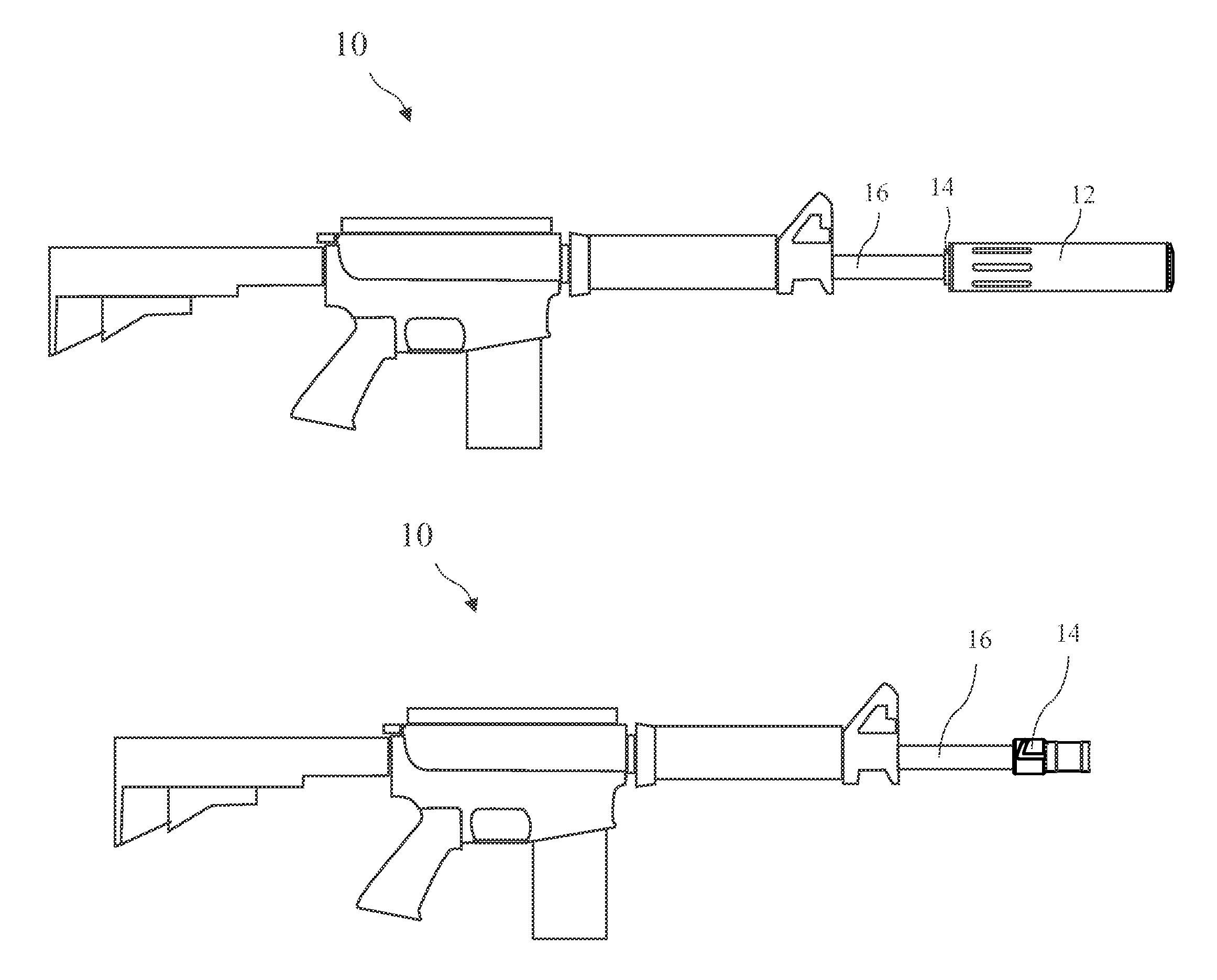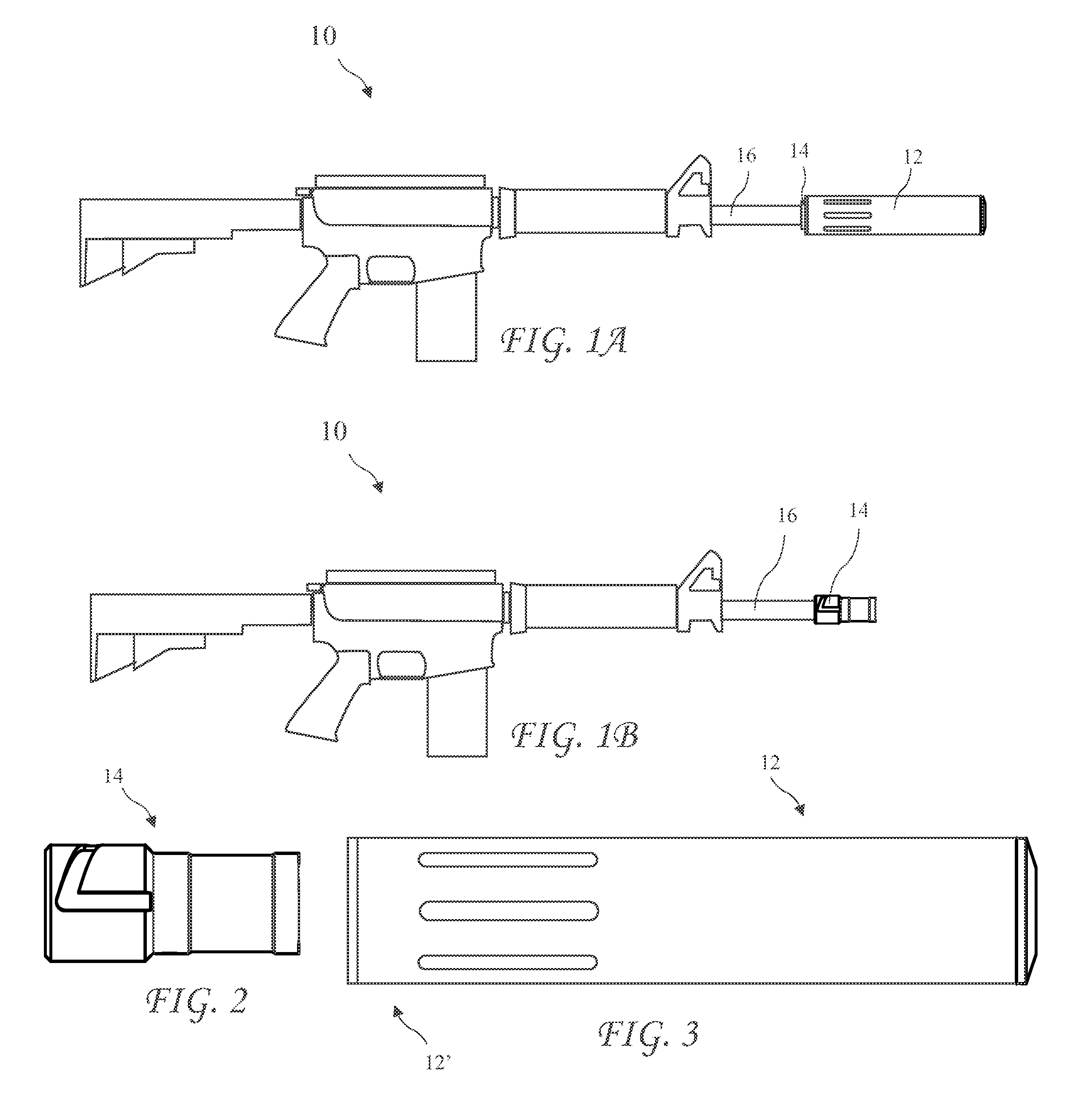Firearm suppressor adapter system
a technology for suppressors and firearms, applied in the field of suppressor adapters, can solve the problems of receiving hostile fire, affecting the accuracy of firearms, and deafening the shooter and others nearby, so as to prevent any loss of accuracy, reduce sound level, and attenuate sound waves
- Summary
- Abstract
- Description
- Claims
- Application Information
AI Technical Summary
Benefits of technology
Problems solved by technology
Method used
Image
Examples
Embodiment Construction
[0063]The following description is of the best mode presently contemplated for carrying out the invention. This description is not to be taken in a limiting sense, but is made merely for the purpose of describing one or more preferred embodiments of the invention. The scope of the invention should be determined with reference to the claims.
[0064]In the following description, cylindrical outside surfaces are referred to as lands, and cylindrical inside surfaces are referred to as steps.
[0065]In the following description, forward is in the direction of fire of the rifle and rearward is towards the rifle butt.
[0066]A side view of a rifle 10 and suppressor 12 according to the present invention is shown in FIG. 1, a side view of the rifle 10 with the suppressor 12 removed and showing a muzzle adapter 14 for the suppressor 12 is shown in FIG. 1B, a side view of the muzzle adapter 14 alone is shown in FIG. 2, and. a side view of the suppressor 12 alone is shown in FIG. 3. The suppressor 12...
PUM
 Login to View More
Login to View More Abstract
Description
Claims
Application Information
 Login to View More
Login to View More - R&D
- Intellectual Property
- Life Sciences
- Materials
- Tech Scout
- Unparalleled Data Quality
- Higher Quality Content
- 60% Fewer Hallucinations
Browse by: Latest US Patents, China's latest patents, Technical Efficacy Thesaurus, Application Domain, Technology Topic, Popular Technical Reports.
© 2025 PatSnap. All rights reserved.Legal|Privacy policy|Modern Slavery Act Transparency Statement|Sitemap|About US| Contact US: help@patsnap.com



